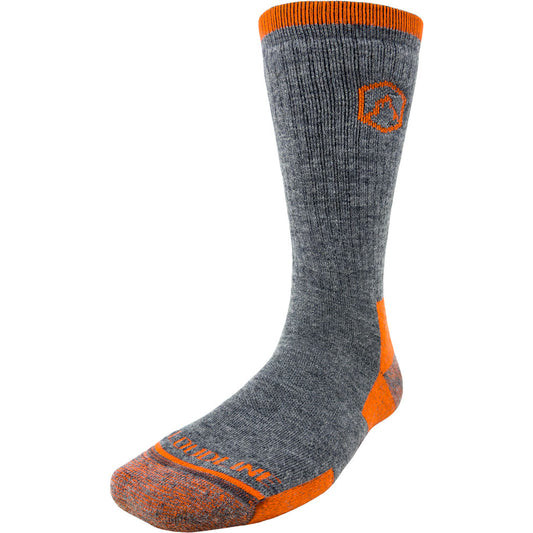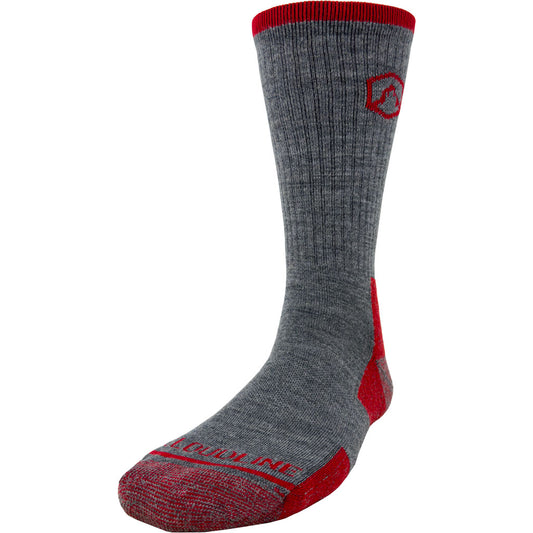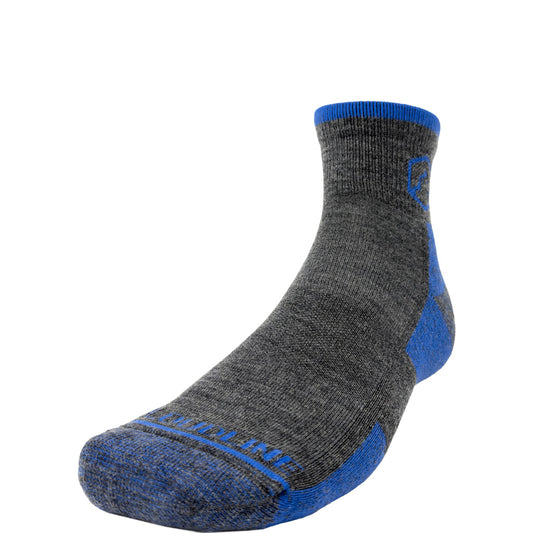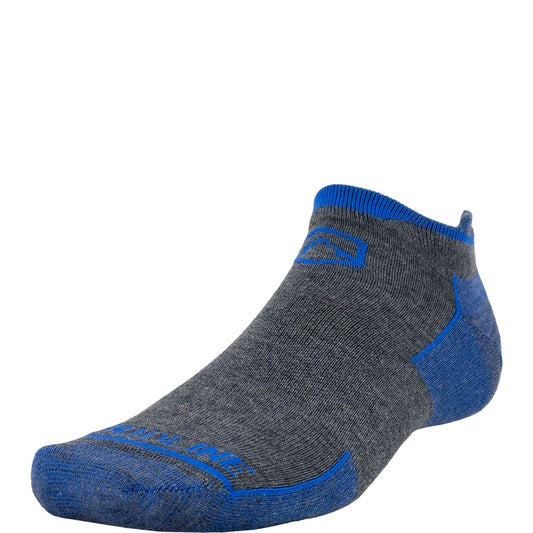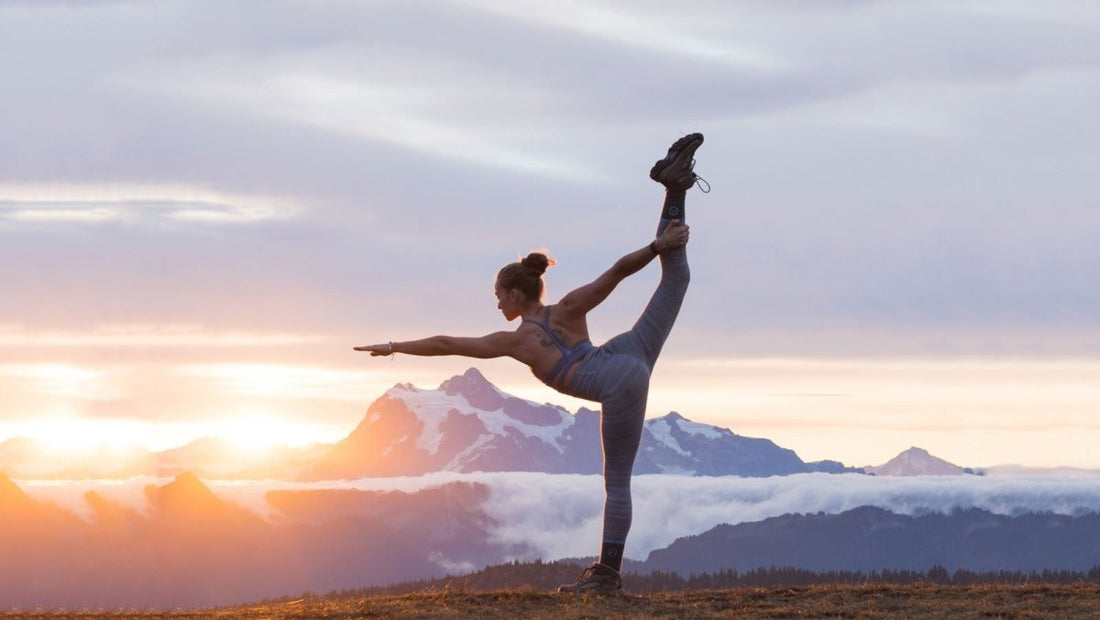
6 Yoga Poses for Hiking & Backpacking
Get Ready for Summer Hiking with Yoga
Yoga can benefit everyone, and it is especially helpful for those of us that love to go hiking and backpacking. Back in October, Bellingham photographer and friend, Rory Savatgy and I went on a hike up to Skyline Divide to shoot 6 yoga poses that will help hikers and backpackers stay trail ready over the winter. We were excited to go on this little endeavor as CloudLine Apparel, an up and coming hiking sock company, reached out to us after noticing our own work together shared on Instagram. As a yoga student and practitioner in the U.S. who enjoys wearing athletic clothing, I find it can be very difficult to purchase products whose creators share values of my own. However, nothing but a mutual connection was uncovered upon connecting with founders Austin and Joe: all four of us are WWU grads (myself soon to be) who love supporting like-minded entrepreneurs with sustainable practices and getting outdoors. Today, almost three months after our collaborative endeavor, I still stand by their product. Their hiking socks are warm, thick enough to not give me blisters on hikes and are versatile enough to wear to school nearly every day (whether it be with boots or sandals)! Thank you Cloudline for not only keeping my feet warm through this year’s fall and winter seasons but also for supporting individuals such as Rory and myself by encouraging us to get on the trail and chase the cloudline near us!
UTTANASANA A
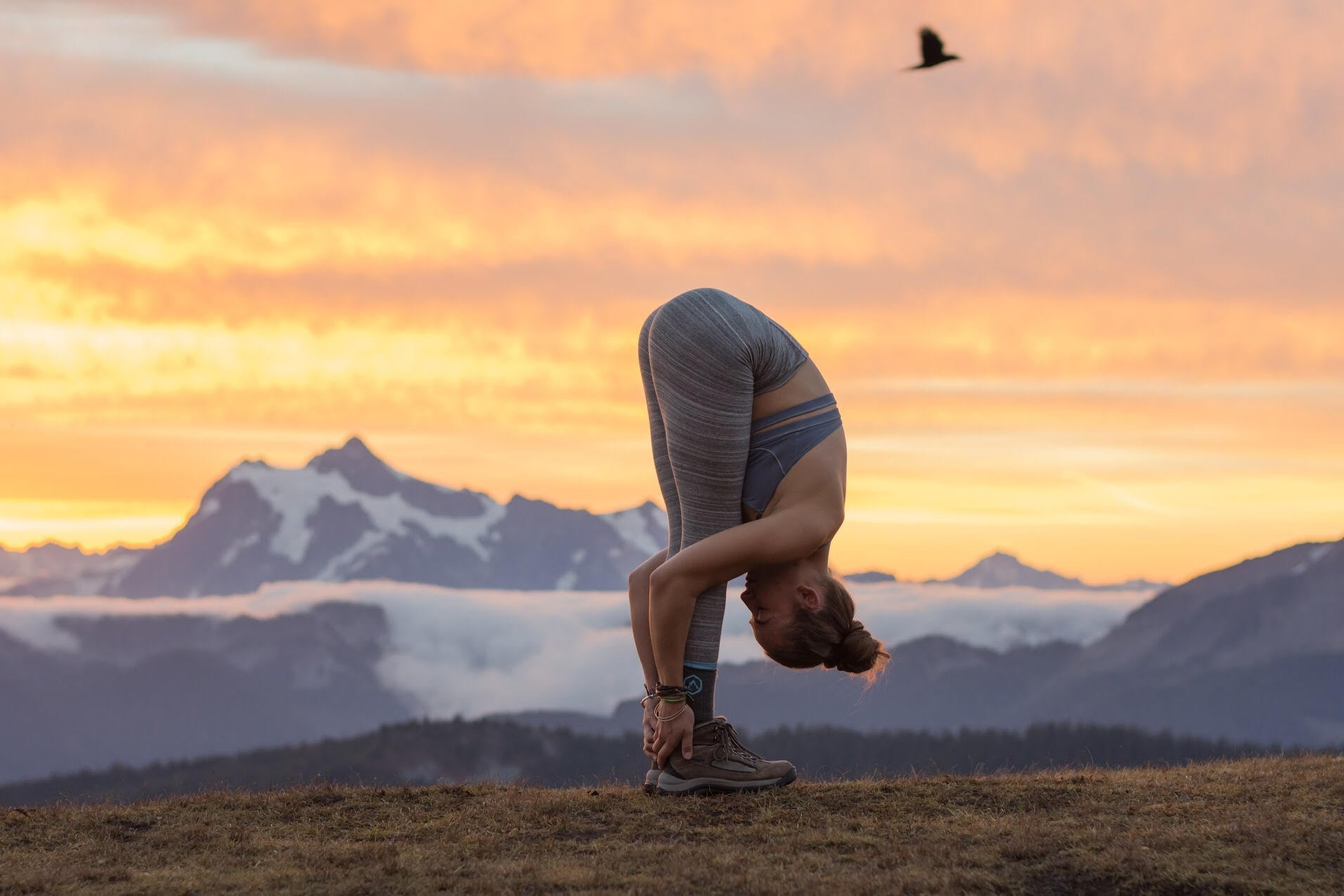
UTTANASANA A (standing forward bend/fold) is one of my most adored postures. As an inversion (any pose which positions the head below the level of the heart) this posture is a great way to begin reversing the impacts hiking can have on our bodies. Gear or not, as one ascends a trail there is a lot of demand upon the quadriceps muscles (front of thighs: vastus laterals, rectus femoris, vastus medialis + vastus intermedius) and the hamstrings (back of the thigh: biceps femoris, semitendinosus, semimebranosus). These two groupings work hand in hand with each step we take.
Pose Prompts
From standing, with toes and heels side by side, bring the hands to heart's center (palms together in front of chest) + begin to lift the knee-caps, engaging the quadriceps muscles. Next, inhale + begin to contract the naval in + back towards to spinal cord, bend the knees + fold from the hips so as to allow the torso to rest on top of the thighs. Bend the knees as much as needed, allowing the spinal muscles to release + lengthen the torso. Place the hands on either side of the feet or reach back behind the ankles, straightening the legs as is comfortable. Be sure to stretch the whole spine in this posture: tuck in the chin to lengthen the back of the neck and remember to intentionally pivot from the hips to prevent rounding in the low spine.
Virabhadrasana I / Warrior I

Virabhadrasana I or Warrior I, an asana from Suryanamaskar b (“sun salutations b”). This closed-hip posture helps strengthen and stretch many of the muscle through the legs, abdominal and sacral (hip) areas. It helps improve stabilizing skills from the foundation of the feet all the way through the crown of the head.
Pose Prompts
From standing (or downward facing if flowing) bend the knees and forward fold, placing the hands down for support to take a big step back. Plant the back foot at a 45degree angle (toes slightly inward so that the open hip my rotate forward), just long enough to sit low in the front, lunging leg. Be careful to not let the front knee extend beyond the ankle or to hyperextend the back knee. Our goal is to one day have the front leg at 90degree angle, thigh parallel to the floor. This is a closed-hip posture so keep the pelvis square to the front of the mat, both iliac crests (frontal portion of the hip bones) coming parallel with the wall in front of you by contracting the navel back to the spine. Keep the kneecap lifted, quadriceps femoris and hip flexor muscles fully contract. Stay lifted through the torso, arms at heart’s center with the scapula relaxed down OR reach high with palms touching and gaze up (pinkies pointing in and back if you need to keep them apart). Shoulders stay relaxed back allowing the scapula to leave space for the neck. Think about keeping the shoulders square above the hips, remember to slightly contract the abdominal muscles through your breath and smile
Urdhva Dhanurasana

As a heart opening and spinal bending posture, Urdhva Dhanurasana can be both revitalizing and overwhelming. This is why, if it is in your practice (and therefore comfort zone), I encourage entering into this posture after a healthy amount of warm-up or exercise.
Pose Prompts
Begin by lying on your back and bend your knees placing your feet on the floor as close to your glutes as possible. Rais your arms over-head bending the elbows and placing your hands on the floor next to your head with the fingers pointing towards the shoulders. When ready, press your feet into the ground while raising your pelvis upward. Then press your hands into the ground lifting your head off the ground. Hold the pose as long as you are comfortable and release.
Malasana / Upavesasana

Commonly used in the U.S. in reference to meditation beads, the word “mala” has multiple pronunciations, spellings and meanings in Sanskrit, one of which is essentially equivalent to “stool,” “waste,” or “excrement” – mala-mūtra-ādi. In this posture, our digestive systems may be kick-started as alignment is achieved because it brings the intestines in a handy position for easy release of wastes. A big theme in the study of yoga is an awareness of systems; the systems of the body, mind, and environment around us. Excretion is just one of the many processes yoga loves to make easy for its students. Though I draw the focus to digestion, this asana also resembles surrender in yoga philosophy. As I understand it, it is also one of the postures achieved after one’s practice advances to the second series in Astanga.
Pose Prompts
From standing: step the feet out a bit wider than hip’s width, toes slightly pointed outward. With hands as support or not, make your way into a low squat. Press firmly into the palms and allow the scapula to draw in + down the back. Contract the navel back to the spine, creating length from the floor of the sacrum straight up through the crown of the head. Don’t just sit in this posture: play with your body’s various ranges of motion, what it might take to find alignment. Inhale and simultaneously squeeze the knees in toward each other, firming the press of the palms. Exhale + release all contracting muscles, allowing the hips to stretch closer to the floor. This posture can be frustrating, awkward and tiring.
Natarajasana (King/Lord of the Dancers Pose)

This last pose is a challenging one, so don’t feel discouraged if you wobble and fall, I’ve had my fair share and trust me, they teach you something every time! P.S. In this photo I am using an advanced variation (and which took me more than a year to figure out with my personal limitations)
Pose Prompts
From standing, bend the right knee, contracting the muscles of the hamstrings as the heel meets the right hand’s grasp to the inside of the ankle. With a firm grip, solidify your balance in the standing leg (knee cap slightly lifted and a balanced distribution of weight in the foot). Begin to kick back into the foot, contracting your gluteus magnus and maximus (aka your bum) to help with hip extension. Point the toes toward the ceiling and simultaneously anteriorly tilt the pelvis (become more parallel to the floor). Lift vertically from the chest, reaching the free arm upwards and keep the ribcage subtly contracted in order to help prevent collapsing into the bend of the low back. In our deep center, we’re passively lengthening the psoas major (which runs Allow the scapula of the right arm to settle down and back, lengthening the reach from the pectoral and shoulder muscles. Breathe steady, find your drishti (gaze-point).
Photography thanks to www.savatgy.com
Find more yoga at www.yogawithadi.com
Planning a Winter Camping or Backpacking Trip? Read our 11 Tips for Winter Camping and Backpacking.

